 September
23
September
23
Tags
Paul Delvaux: Secret Facets of Surrealism
On the 23rd of September 1897, Belgian painter and printmaker Paul Delvaux was born in Antheit, Belgium. His original style and the mysterious, almost mystical, themes he employed in his art, place him outside ‘the box’ of any formal art movement. Between 1920 and 1924, Delvaux studied at the Académie des Beaux-Arts in Brussels. His early work was close to Social Realism; in the late 1920s, he was strongly influenced by Flemish Expressionism. But in 1934 his interest shifted towards Surrealism, especially the paintings of Giorgio de Chirico. However, he was never formally a member of the Surrealist movement, and was not in sympathy with its political aims. All of Delvaux’s personal friendships influenced him in one way or another. With James Ensor he shared a love of skeletons, and the work of Rene Magritte really cemented the idea of surrealist-realism in Delvaux’s art.
 Most of his paintings show nude or semi-nude women in incongruous settings; they are all of the same type – beautiful, statuesque, unattainable dream figures, lost in thought or reverie or in a state of suspended animation. Male figures tend to be absorbed in their newspapers or the study of stones. The dream beauties are often placed in elaborate architectural settings, reflecting both de Chirico’s strange perspectives and Delvaux’s interest in the architecture of ancient Rome. The grandiosely classical centre and the suburbs of Brussles, crisscrossed by tramlines were, however, just as significant. In actual fact, the trains and trams – strongly associated with eroticism – only intensified the already erotic subtext prevalent in majority of Delvaux’s paintings. “Delvaux’s early interest in lines found a natural expression in drawing for which he showed a precocious aptitude. His early training as an architect and his subsequent studies at art school led him to appreciate the analytical purpose of drawing – the recognition of linear structures beneath masses, whether of the skeletal and muscular framework of the human body or the mathematical forms that governed architecture. But Delvaux was also fully aware of drawing’s immense erotic potential as can be witnessed, for example, in his obsessive interest in curvilinear forms, especially of the human body. Hair, for example, especially pubic hair, is often a central motif in his pictures. As many hundreds of sketches attest, drawing was, for Delvaux, erotic both as a practice and in so far as it produced sexually-stimulating images, ones that were a function of the curved line, as embodied in the female anatomy, or in the straight line, as in architecture and perspective.” (David Scott, Loving Perspectives; Irish Arts Review Yearbook, Vol. 10, 1994)
Most of his paintings show nude or semi-nude women in incongruous settings; they are all of the same type – beautiful, statuesque, unattainable dream figures, lost in thought or reverie or in a state of suspended animation. Male figures tend to be absorbed in their newspapers or the study of stones. The dream beauties are often placed in elaborate architectural settings, reflecting both de Chirico’s strange perspectives and Delvaux’s interest in the architecture of ancient Rome. The grandiosely classical centre and the suburbs of Brussles, crisscrossed by tramlines were, however, just as significant. In actual fact, the trains and trams – strongly associated with eroticism – only intensified the already erotic subtext prevalent in majority of Delvaux’s paintings. “Delvaux’s early interest in lines found a natural expression in drawing for which he showed a precocious aptitude. His early training as an architect and his subsequent studies at art school led him to appreciate the analytical purpose of drawing – the recognition of linear structures beneath masses, whether of the skeletal and muscular framework of the human body or the mathematical forms that governed architecture. But Delvaux was also fully aware of drawing’s immense erotic potential as can be witnessed, for example, in his obsessive interest in curvilinear forms, especially of the human body. Hair, for example, especially pubic hair, is often a central motif in his pictures. As many hundreds of sketches attest, drawing was, for Delvaux, erotic both as a practice and in so far as it produced sexually-stimulating images, ones that were a function of the curved line, as embodied in the female anatomy, or in the straight line, as in architecture and perspective.” (David Scott, Loving Perspectives; Irish Arts Review Yearbook, Vol. 10, 1994)
 The most important single source of inspiration for Delvaux was his discovery in 1932 of the Musée Spitzner, a travelling exhibition of medical curiosities, which set up camp annually near the Gare de Midi in Brussels. The collection of the Musée Spitzner “included, among its exhibits, wax models of human deformities, a child’s head preserved in a glass jar, a tanned human skin and a didactic portrayal of all the symptoms of venereal disease. It also included paintings of Charcot, the famous doctor, examining an hysterical woman in front of medical students, and of Louis Pasteur at the bedside of a sick child. What struck Delvaux about these paintings was their realism. Although Delvaux’s first painting of the Musée Spitzner, completed that year (later destroyed) portrayed its figures in a flattened, virtually depthless space, his work of the next two years began to create a sense of pictorial depth and, with it, some of the impact of the ‘realist’ paintings exhibited in the Musée Spitzner.” (Scott). This experience became the source for a whole series of paintings in which Delvaux explored the themes of love and death. Sleeping Venus (1944) is one of a number of paintings inspired by a star attraction, the waxwork of a naked woman so lifelike, the viewers could almost see her breathing. She is accompanied by a skeleton and one of his characteristic ladies in flowery hats.
The most important single source of inspiration for Delvaux was his discovery in 1932 of the Musée Spitzner, a travelling exhibition of medical curiosities, which set up camp annually near the Gare de Midi in Brussels. The collection of the Musée Spitzner “included, among its exhibits, wax models of human deformities, a child’s head preserved in a glass jar, a tanned human skin and a didactic portrayal of all the symptoms of venereal disease. It also included paintings of Charcot, the famous doctor, examining an hysterical woman in front of medical students, and of Louis Pasteur at the bedside of a sick child. What struck Delvaux about these paintings was their realism. Although Delvaux’s first painting of the Musée Spitzner, completed that year (later destroyed) portrayed its figures in a flattened, virtually depthless space, his work of the next two years began to create a sense of pictorial depth and, with it, some of the impact of the ‘realist’ paintings exhibited in the Musée Spitzner.” (Scott). This experience became the source for a whole series of paintings in which Delvaux explored the themes of love and death. Sleeping Venus (1944) is one of a number of paintings inspired by a star attraction, the waxwork of a naked woman so lifelike, the viewers could almost see her breathing. She is accompanied by a skeleton and one of his characteristic ladies in flowery hats.
The characteristic otherworldly character of Delvaux’s drawings and paintings can be also traced back to his early childhood fascination with the books by Jules Verne. “When Delvaux was about seven years old, the secretary of his father (a lawyer) gave him a copy of Jules Verne’s novel Twenty Thousand Leagues Under the Sea. His subsequent enthusiasm for Verne’s works explains the frequent appearance in his paintings of Otto Lidenbrock (the geologist from the Journey to the Centre of the Earth) from the original illustration by Eduard Riou: he is the foreground character on the right [of the Phases of the Moon II] with a kind of frock coat, the glasses on the forehead and examining closely an ammonite, a rock, an undefined object and sometimes … nothing in his hands. He first appeared in March 1939 in the Phases of the Moon I. The middle-class gentleman with the bowler hat at the extreme right [of the Phases of the Moon II] is another souvenir from Delvaux’s youth: a man he saw passing every day at the same hour on the sidewalk in front of his house and who became a kind of concept, that of a civil servant from one of the numerous administrations or ministries in Brussels where he was living then.” (Andre Heck, Organizations and Strategies in Astronomy 7). It appears then that Delvaux was extremely susceptible to impulses from within and without our being; he combined two worlds in his paintings – fantasy and reality, creating an alternative universe of surrealist visions which are breathtakingly captivating to this day.
Feature Image: Woman in the Mirror (1936); Credit: Museo Thyssen


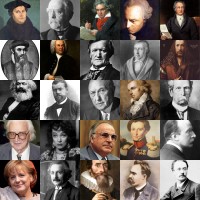


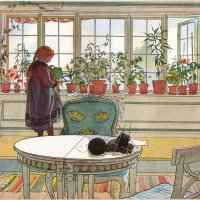

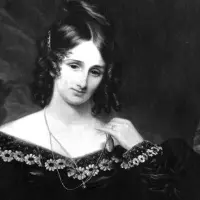
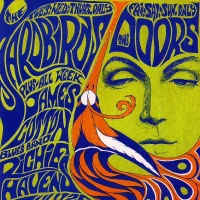
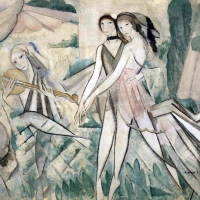


thank you for the link
LikeLike
What a interesting post!
LikeLike
Reblogged this on Manolis.
LikeLike